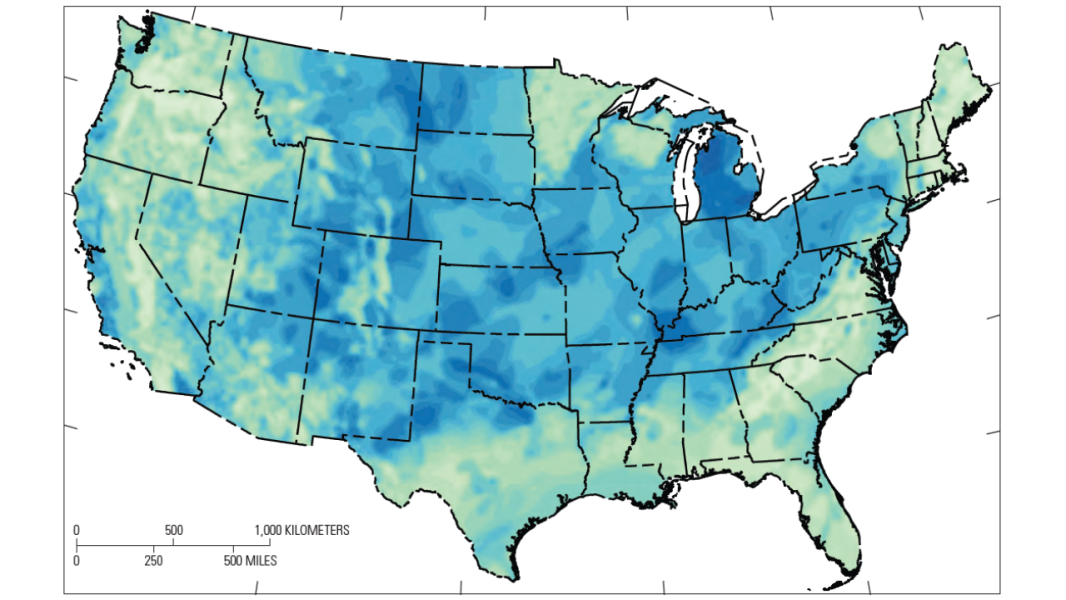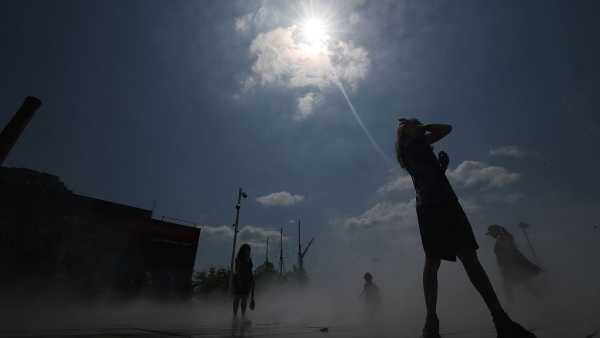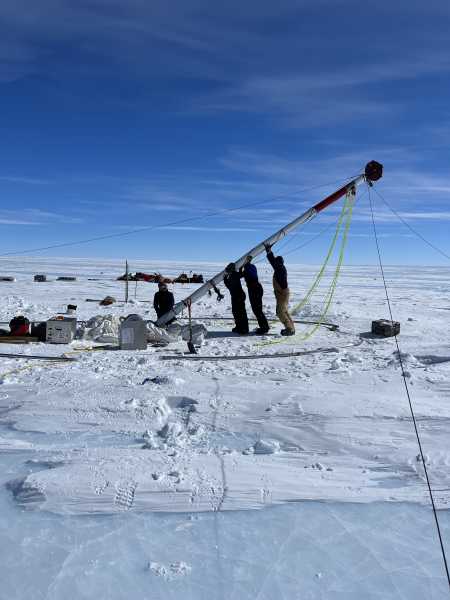
A map showing areas of the United States where hydrogen reserves are unlikely to exist (white to light blue) and where hydrogen reserves are likely to exist (blue to dark blue). (Image courtesy of the U.S. Geological Survey)
A first-of-its-kind map of the United States has revealed the potential locations of vast natural hydrogen reserves.
The map available here is the first to show hydrogen prospects at this scale, highlighting regions where hydrogen may be located underground in quantities sufficient to be extracted.
The researchers who created the map already suspected that the Earth's crust might contain more hydrogen than scientists had previously thought. But now that the results have been published, even the team behind the map is surprised, according to the statement.
“For decades, the conventional wisdom has been that natural hydrogen does not accumulate in sufficient quantities to be used for energy purposes,” said Sarah Riker, deputy director for energy and mineral resources at the U.S. Geological Survey (USGS), who was not involved in the study. “This map is exciting because it suggests that there may indeed be underground hydrogen reserves in some parts of the U.S.”
The map is color-coded from white to dark blue, with dark blue indicating areas of high potential—likely to contain significant hydrogen reserves—and white indicating regions with no prospects. High-potential areas include most of Michigan, eastern Kentucky, and southern North Dakota, as well as parts of Kansas, Colorado, Wyoming, Iowa, and Oklahoma.
Assessing a region’s potential for hydrogen is based on three key factors that must be in alignment: the source(s) of hydrogen, the reservoir rocks, and the natural conditions for trapping the gas underground. Geological hydrogen is naturally occurring hydrogen, also known as “white” or “golden” hydrogen, that is formed by chemical reactions in rocks, the simplest of which is the reaction that splits water into hydrogen and oxygen.
The map shows that at least 30 U.S. states have the conditions needed to store hydrogen underground, with high potential for gas discovery in large swaths of the Midwest, as well as regions along the California coast and the East Coast, according to the statement.
Hydrogen is a clean energy source. Researchers predict that in some sectors it will make up to 30% of future energy supplies, with demand likely to increase fivefold by 2050.
In a study published last month, the same researchers estimated that Earth's total buried hydrogen reserves are 6.2 trillion tons (5.6 trillion metric tons) of the gas. Just 2 percent of that would provide all the world's energy for 200 years, they said.
But that assessment didn’t specify where exactly those reserves were, which would determine their availability and therefore whether they could be extracted. In the previous study, “we showed that there was significant potential for subsurface hydrogen as a new energy resource,” said Sarah Gelman, a geologist at the USGS Central Energy Resources Science Center who contributed to the new study. “The next logical step was to figure out where it might be in the United States.”
The map and an accompanying report detailing the findings were published Thursday (January 16) on the U.S. Geological Survey website.
Sourse: www.livescience.com





